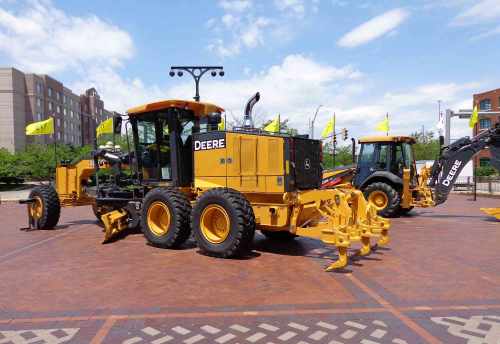Before moving out into the “village,” we spent a fair amount of time wandering amid the wonders of the sprawling, indoor museum. One can watch the progression of technology over more than 100 years, in fields as disparate as art, transportation, farming, and food preparation. It’s truly a remarkable collection. There are wagons and coaches, more than 350 antique cars, more than a dozen airplanes, and 100 antique tractors, plus toys, sculpture, and machines for every possible task. Fabulous.
One fact I found fascinating was the extent of operations for moving freight. Before Henry and Clem Studebaker made cars, they made huge Freight Wagons, and these wagons moved a tremendous amount of goods (from trade goods to simply people moving households) along the Oregon Trail. The operation of one freight company alone — Bussell, Major, and Waddell — required 6,000 wagons and 75,000 oxen to move freight over the trail. Remarkable. And not the sort of thing one ever sees in schoolbooks.
There was a sign that explained that the buckboard wagon paralleled today’s station wagon or mini van. It could accommodate a family, but the seats could be removed to make room for grain bags or other supplies.
Having already done enough research on popcorn to know that C.C. Cretors would be a major part of my chapter on popcorn, I was delighted to see one of the early Cretors popcorn machines/wagons, with the little Tosty Rosty Man looking a bit the worse for wear, but still at his station, ready to turn the crank if the steam got turned on again.









